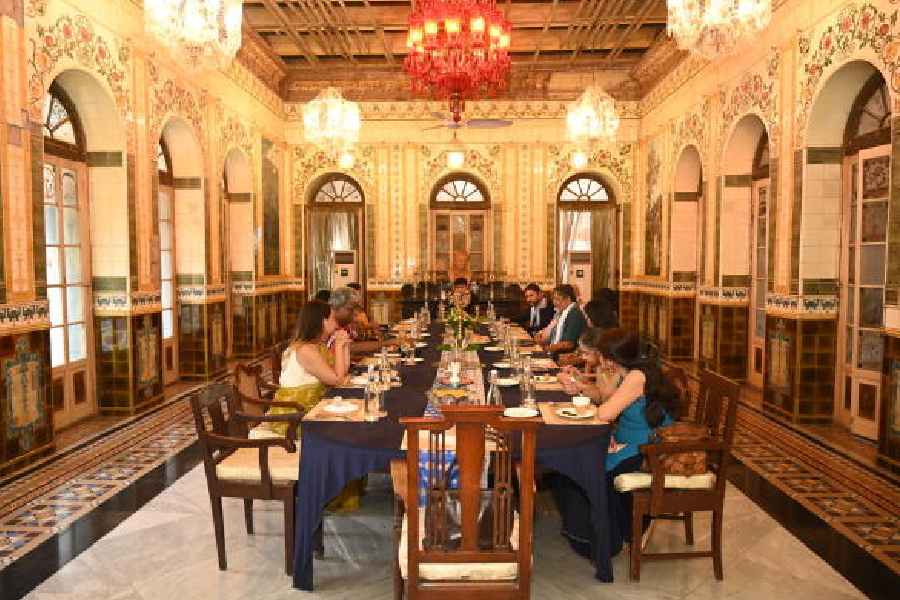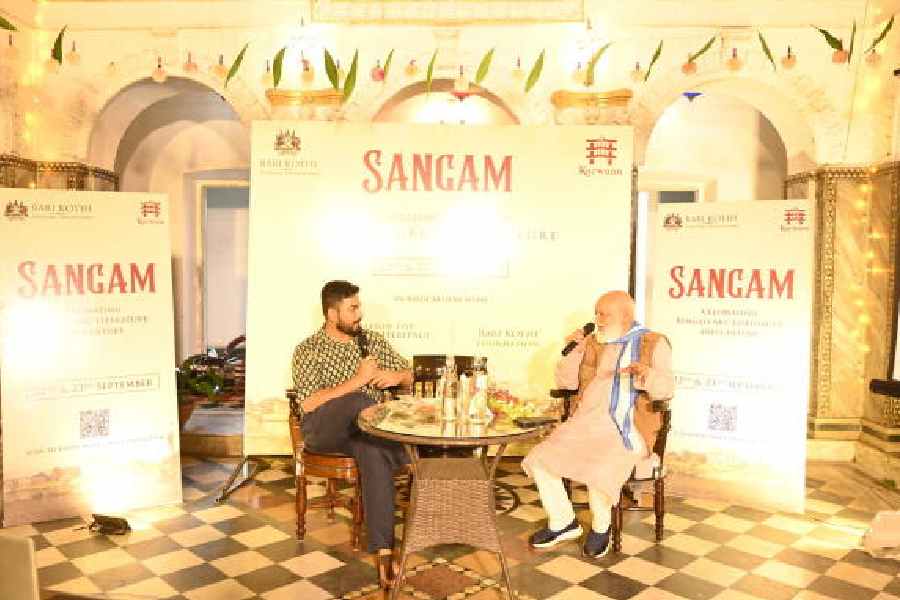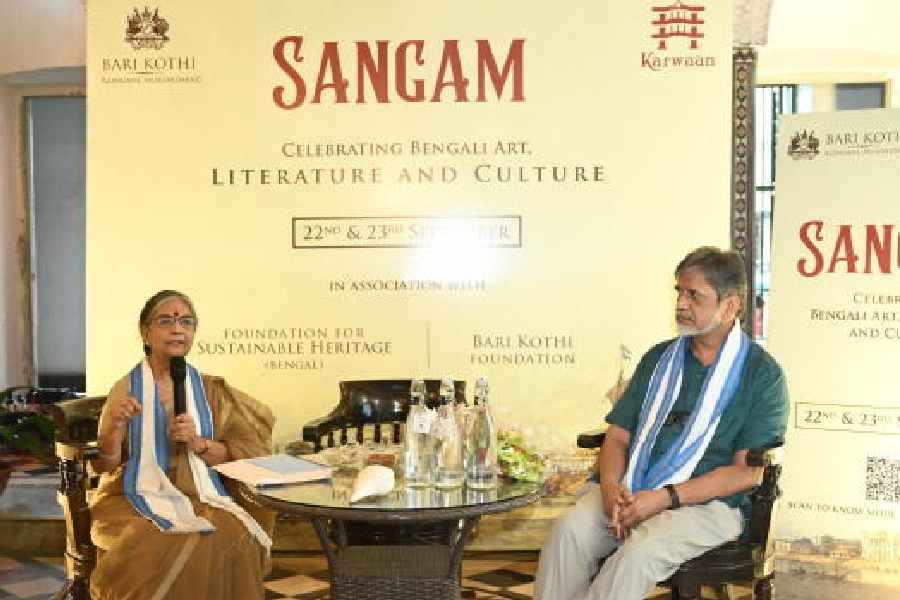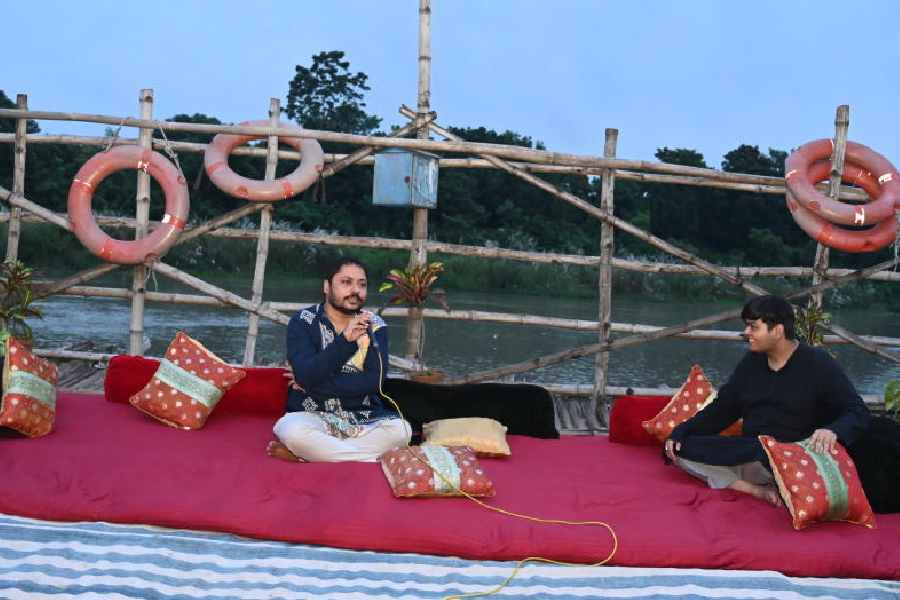Bari Kothi in Azimganj, Murshidabad, added a new event to its calendar and with Sangam, a new dimension has been added to the heritage property. The two-day literature festival at the heritage house-turned-luxury boutique hotel brought the focus on the region, the erstwhile capital of Bengal, a hub of merchants in the 1700s and 1800s. Its picturesque location with the mighty river Bhagirathi flowing uninterrupted in a land dotted with many kothis bearing the wrath of time, formed the perfect backdrop for a festival that melds the past with the present and starts a new dialogue. From highlighting the rich tradition of arts followed here with top historians of the country in company, to discussing and savouring the cuisine, especially of the Sheherwali community, and more, the festival aims to only grow with time.
Talking about Sangam, Darshan Dudhoria, director, Bari Kothi Heritage Hotel, said: “Sangam was born out of our deep appreciation for Bengali art, literature, and culture. Bari Kothi has always been a hub for heritage and cultural enthusiasts and the Sheherwalis have been patrons of art, literature and culture. We felt it was essential to create a platform that celebrates the rich heritage of this region. The idea behind Sangam was to bring together artists, writers, and cultural enthusiasts to showcase and celebrate the diverse and vibrant Bengali culture that has thrived in this region for centuries. We wanted to create an event that not only highlights the cultural heritage of Murshidabad but also fosters creativity, collaboration, and a deeper understanding of the region’s cultural richness.”

After the live cooking session, guests were treated to a multi-course meal that included Kacche Kele Ka Samosa, Dahi Khichdi, Madia, Chena Vada and more, at the grand dining hall.

Food critic and historian Puspesh Pant and Sadaf Hussain, a Delhi-based consultant chef and author of Daastan-e-Dastarkhan: Stories and Recipes from Muslim Kitchens, sat together to discuss the culinary craftsmanship of Murshidabad. In the Food of Murshidabad session, the duo highlighted the uniqueness of cuisines in the region, the major influences, and more. The discourse went beyond borders and talked about culinary arts in Bangladesh with Pant expressing his wish to have a study on the range of food in Bengal, seasonwise, both in Bengal and Bangladesh.

The first session of Sangam discussed the art of Bengal and it was highly insightful. Employing their expertise, Ratnabali Chatterjee, professor of history, department of Islamic History and Culture, Calcutta University, and author of From the Karkhana to the Studio: Changing Social Roles of Patron and Artist in Bengal, and Indrapramit Roy, a contemporary artist who teaches painting at the faculty of fine arts, MS University, Baroda, gave the house an insight into the different forms of paintings that evolved in the region, its history, influence and inspiration, and how it has evolved over the years. Through a photo essay on the projector, Chatterjee showed how Murshidabad was the centre of arts for a few decades.

The setting sun in an overcast sky, the glow of orange on the horizon, the uninterrupted river and the abundance of kash phool on the shore made for a perfect setting for Baithak on Ganges. Headlined by Prof. Kanad Sinha who teaches ancient Indian and world history at The Sanskrit College and University, the one-hour session on the large boat transpired into the religious traditions of Bengal with a focus on female goddesses. With his in-depth knowledge of the subject, Sinha also talked about the entry of male Gods, the regional preferences of different male and female Gods and more.
